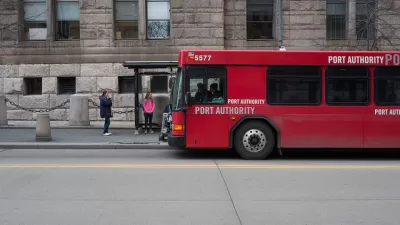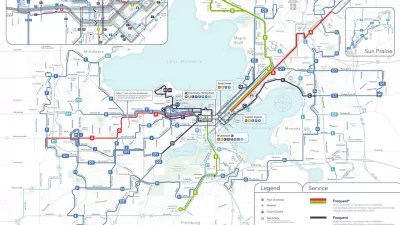Pierce Transit, which serves Pierce County in Washington State, is undertaking a bus stop balancing project intended to speed up bus service. They're also doing the work of explaining why a reduction of bus stops is desirable, or even necessary.
Perce Transit has created an explainer video to illustrate the reasoning and actions behind an ongoing project to balance bus stops in the transit agency's service area in Pierce County, Washington.
The Pierce Transit website for the project includes the following explanation of the ongoing project:
Pierce Transit is conducting a “Bus Stop Balancing” project. The goal of this project is to speed up trips on Pierce Transit bus rides. We’re doing that by conducting a thorough examination of each bus stop and consolidating, removing or relocating stops, based on specific criteria, at the Sept. 19, 2021, service change. The project also aims to increase safety, ensure buses are running on time, increase ridership and potentially give us the opportunity to add more service hours with the cost savings.
The website also provides this explanation o the reasoning behind the effort to reduce the number of bus stops in the system:
When bus stops are too close together, it slows an entire transit system down. That can negatively impact ridership, as one of the primary reasons people don’t ride transit is because it can take longer to reach their destination.
The website also includes the video, shared above, to further illustrate the project and the concept of bus stop balancing.
Hat tip to Stephen Fesler and The Urbanist for sharing the news about the project and the video.
FULL STORY: Midweek Video: Bus Stop Balancing Pierce Transit

Planetizen Federal Action Tracker
A weekly monitor of how Trump’s orders and actions are impacting planners and planning in America.

San Francisco's School District Spent $105M To Build Affordable Housing for Teachers — And That's Just the Beginning
SFUSD joins a growing list of school districts using their land holdings to address housing affordability challenges faced by their own employees.

The Tiny, Adorable $7,000 Car Turning Japan Onto EVs
The single seat Mibot charges from a regular plug as quickly as an iPad, and is about half the price of an average EV.

Seattle's Plan for Adopting Driverless Cars
Equity, safety, accessibility and affordability are front of mind as the city prepares for robotaxis and other autonomous vehicles.

As Trump Phases Out FEMA, Is It Time to Flee the Floodplains?
With less federal funding available for disaster relief efforts, the need to relocate at-risk communities is more urgent than ever.

With Protected Lanes, 460% More People Commute by Bike
For those needing more ammo, more data proving what we already knew is here.
Urban Design for Planners 1: Software Tools
This six-course series explores essential urban design concepts using open source software and equips planners with the tools they need to participate fully in the urban design process.
Planning for Universal Design
Learn the tools for implementing Universal Design in planning regulations.
Smith Gee Studio
City of Charlotte
City of Camden Redevelopment Agency
City of Astoria
Transportation Research & Education Center (TREC) at Portland State University
US High Speed Rail Association
City of Camden Redevelopment Agency
Municipality of Princeton (NJ)





























